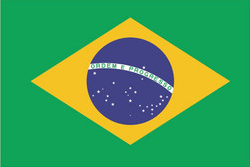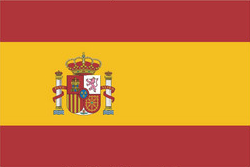A New Era of Information and Insight About out Changing Planet
DigitalGlobe’s latest WorldView-3 satellite provides imagery with unprecedented quality that allows our customers to see the Earth clearly and in new ways resulting in valuable information to save lives, resources and time.
In recent weeks, we’ve shared with you how WorldView-3 can see through smoke, and how the oil and gas industry can benefit from our superior resolution. Today we will share with you the first-ever-released 30 cm images from a commercial satellite, and interactive examples of the valuable information that can be extracted.
Before now, the only way to capture remotely sensed images at 30 cm resolution was from a camera mounted to the bottom of an airplane. But decision makers who rely on aerial imagery are dependent on costly, limited, geographic coverage and sporadic frequency, especially over large or remote regions. DigitalGlobe’s WorldView3 satellite, allows our customers to see the world with great fidelity, not just in one place at one time, but covering large areas on a frequent basis, at virtually any point on the globe.
WorldView-3’s super-spectral 30 cm imagery allows for fast and precise mapping of various features anywhere in the world – Madrid, Spain being the area of interest for this blog. To illustrate how much more visual information is contained in 30 cm image, examine the slider below.
On the left is the 30 cm image captured by WorldView-3 and on the right is a 70 cm resolution imagery, which represents the highest quality available from our nearest competitor. Notice the lettering on the taxiways/aprons that can be clearly identified at 30 cm resolution while the details are missing at 70 cm resolution. Finer details such as details on building rooftops, condition of taxiways, lampposts, and other details are only distinguishable at 30 cm WorldView-3 imagery.
Click here for a larger view.
Explore more WorldView-3 sample imagery via our slideshare presentation.
In our next example, the visual information extracted from WorldView-3 can be a game changer for Urban Planners and GIS professionals.
On the left is the satellite image, and on the right is a map of all the information features [or layers] that have been extracted based on the available visual information. Urban planners can have an accurate and up-to-date map identifying; digitized building footprints, trees along the road indicating potential encroachment on power lines, sidewalks for easement and right of way, location of man holes for sewer access, road centerlines and widths, and swimming pools with and without permits. A WorldView-3 image is accurate both in resolution and in its alignment with the true surface of the Earth, therefore the extracted features are also in the right place and more certain, than a less accurate image.
The quality of information extracted from WorldView-3 is not possible with 70 cm imagery from any source. Urban planners can make smart decisions about the allocation of scarce resources with confidence, faster, and more cost effectively with WorldView-3.
Click here for a larger view.
WorldView-3 quality delivers value across a range of industries. A transportation department official can accurately identify and map road conditions on a frequent basis and over large areas. Compared to traditional ground and aerial surveying, 30 cm satellite data and information is more cost-effective, saving resources and time, as well as minimizing the carbon footprint on the environment.
Using the finer details of 30 cm imagery, transportation officials can accurately measure progress over time on major road projects, or decide which road issues need immediate attention, like fixing hazardous potholes.
Also in this example, you can see how an insurance company can identify the roof conditions on individual houses. This information is valuable to facilitate fast and equitable insurance settlements and minimizes false insurance claims on roof maintenance, in case of hail damage or other extreme weather.
In this slider, the 30 cm satellite image is on the right and the 70 cm image is on the left.
Click here for a larger view.
Stay tuned for an upcoming blog post where we’ll explore the unique spectral diversity that WorldView-3 offers. Capturing more than pixels with visual information, we are pioneering the ability to automatically extract valuable information in the invisible part of sunlight which carries additional spectral information.
In this interconnected global economy, understanding of micro, regional, and global trends is of paramount importance for decision makers. Being able to identify patterns and make decisions with confidence, based on the highest quality and most current visual information is important for today. Having access to a broader spectrum of high quality data to peer into the unseen world will support our customer’s decisions for tomorrow.
For 30 cm imagery product samples go to http://www.digitalglobe.com/product-samples.
For more information on how DigitalGlobe is uniquely positioned to unlock the power of geospatial information to create information products and solutions for the changing planet, please visit: www.digitalglobe.com
DigitalGlobe would like to thank NOAA for permission to release the 30 cm examples shown and downloadable here. As per our operating license, 40 cm products are now available to all customers for purchase. Full commercial availability for 30 cm products begins in February 2015.
Source: DigitalGlobe








